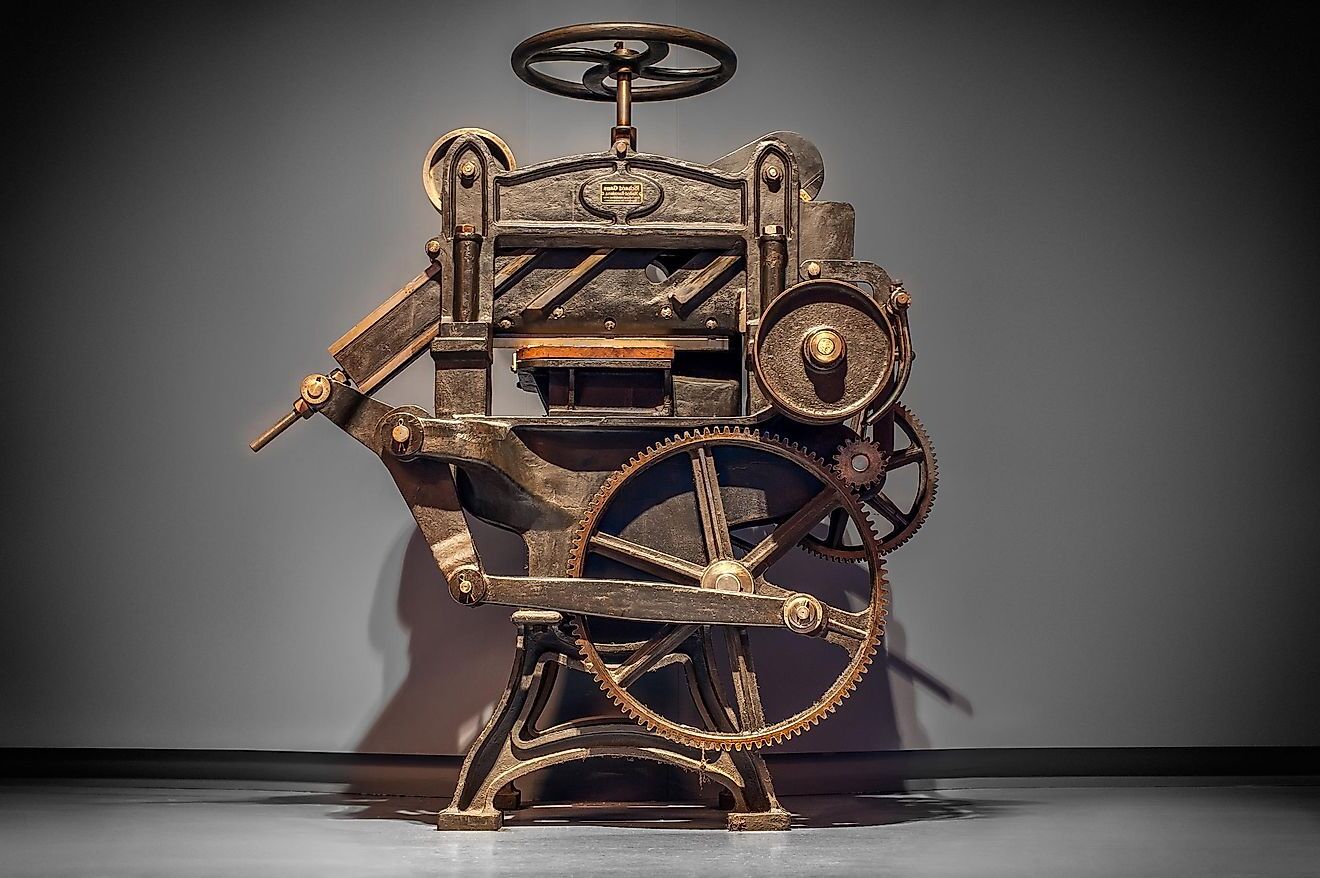
Ever wondered what medieval technologies have been lost to time? The Middle Ages were a period of incredible innovation, but many of these advancements have vanished. From mysterious alloys to forgotten construction techniques, these lost technologies continue to baffle historians and scientists. Imagine a world where ancient engineers built structures that modern technology struggles to replicate. Why did these technologies disappear? Was it due to wars, natural disasters, or simply the march of progress? This blog post will dive into 30 fascinating facts about these forgotten marvels, shedding light on the ingenuity of our ancestors and the mysteries that still surround their creations.
Key Takeaways:
- Medieval times were filled with fascinating inventions and technologies that have been lost or forgotten. From advanced metallurgy to mysterious alchemical practices, the ingenuity of medieval engineers and thinkers continues to captivate our imagination.
- Medieval societies developed impressive technologies for water management, medical treatments, and agricultural practices. These innovations, along with architectural marvels and artistic techniques, showcase the creativity and resourcefulness of medieval people.
Lost Medieval Technologies: A Glimpse into the Past
Medieval times were filled with fascinating inventions and technologies that have since been lost or forgotten. These innovations were ahead of their time, showcasing the ingenuity of medieval engineers, artisans, and thinkers. Here are 30 intriguing facts about lost medieval technologies.
Advanced Metallurgy Techniques
Medieval blacksmiths and metallurgists developed techniques that were surprisingly advanced for their time. Some of these methods have been lost to history.
- Damascus Steel: Known for its strength and distinctive patterns, Damascus steel was used to make swords and knives. The exact process to create it remains a mystery.
- Wootz Steel: Originating in India, Wootz steel was a high-quality metal used in weaponry. Its production method was lost by the 17th century.
- Crucible Steel: Medieval metallurgists used crucibles to produce high-quality steel, a technique that was later rediscovered during the Industrial Revolution.
Architectural Marvels
Medieval architecture included some incredible techniques and designs that have puzzled modern engineers.
- Flying Buttresses: These external supports allowed for taller and more stable buildings, such as the Notre-Dame Cathedral.
- Gothic Vaulting: Complex ribbed vaults enabled the construction of large, open interior spaces in cathedrals.
- Stained Glass Windows: Medieval artisans created intricate stained glass windows using techniques that are still not fully understood.
Ingenious Water Management
Water management was crucial for medieval societies, and they developed some impressive technologies to control and utilize water.
- Aqueducts: Medieval engineers built aqueducts to transport water over long distances, inspired by Roman designs.
- Water Wheels: Used for milling grain and other tasks, water wheels were an essential part of medieval industry.
- Cisterns: Large underground cisterns were used to store water, ensuring a steady supply during dry periods.
Lost Medical Knowledge
Medieval medicine included some advanced practices and treatments that have been lost or forgotten.
- Trepanation: This surgical procedure involved drilling a hole in the skull to treat head injuries or mental illnesses.
- Herbal Remedies: Medieval healers used a wide variety of herbs to treat ailments, some of which are no longer in use.
- Bloodletting: Though now considered outdated, bloodletting was a common medieval treatment believed to balance the body's humors.
Forgotten Navigation Tools
Medieval explorers and sailors used various tools and techniques to navigate the seas, some of which have been lost to time.
- Astrolabe: This ancient instrument was used to measure the altitude of stars and planets, aiding in navigation.
- Cross-staff: A simple tool used to measure the angle between two points, helping sailors determine their latitude.
- Portolan Charts: Detailed nautical maps that showed coastlines and harbors, used by medieval mariners.
Mysterious Alchemical Practices
Alchemy was a blend of science, philosophy, and mysticism, with medieval alchemists pursuing various goals, including the transmutation of base metals into gold.
- Philosopher's Stone: A legendary substance believed to grant immortality and turn lead into gold.
- Elixir of Life: A mythical potion that alchemists sought, believed to grant eternal youth and health.
- Alchemical Symbols: Complex symbols used to represent elements and compounds, many of which remain undeciphered.
Advanced Agricultural Techniques
Medieval farmers developed innovative methods to improve crop yields and manage their land.
- Three-Field System: A crop rotation method that increased agricultural productivity by allowing one field to lie fallow each year.
- Heavy Plow: This improved plow design allowed for deeper tilling of soil, making it easier to cultivate heavy, clay-rich soils.
- Irrigation Systems: Medieval farmers built intricate irrigation systems to ensure their crops received enough water.
Lost Artistic Techniques
Medieval artists and craftsmen developed unique techniques that have since been lost or forgotten.
- Illuminated Manuscripts: These beautifully decorated books featured intricate illustrations and gold leaf, created using techniques that are not fully understood.
- Fresco Painting: A method of painting on wet plaster, allowing the colors to become part of the wall itself.
- Tapestry Weaving: Medieval weavers created detailed tapestries using techniques that have been lost over time.
Forgotten Military Innovations
Medieval warfare saw the development of various technologies and strategies that have since been lost.
- Greek Fire: A mysterious incendiary weapon used by the Byzantine Empire, the formula for which remains unknown.
- Trebuchet: A powerful siege engine that used a counterweight to launch projectiles over long distances.
- Chainmail Armor: Made of interlocking metal rings, chainmail provided flexible and effective protection in battle.
Lost Knowledge of Astronomy
Medieval astronomers made significant advancements in understanding the cosmos, some of which have been lost or forgotten.
- Antikythera Mechanism: An ancient Greek device used to predict astronomical positions, rediscovered in a medieval shipwreck.
- Armillary Sphere: A model of the celestial sphere used to demonstrate the movement of stars and planets.
- Celestial Navigation: Techniques used by medieval sailors to navigate using the stars, many of which have been lost over time.
Hidden Gems of Medieval Ingenuity
Medieval times were full of innovative technologies that often get overlooked. From Greek fire to Damascus steel, these advancements were ahead of their time. Watermills and windmills revolutionized agriculture, while astrolabes and mechanical clocks pushed the boundaries of navigation and timekeeping. Stained glass windows and flying buttresses transformed architecture, creating awe-inspiring cathedrals. Alchemy and medieval medicine laid the groundwork for modern science and healthcare.
These lost technologies remind us that even in the so-called "Dark Ages," human ingenuity shone brightly. They offer a glimpse into a world where creativity and necessity drove remarkable achievements. By exploring these forgotten innovations, we gain a deeper appreciation for the past and its influence on our present. So next time you think of medieval times, remember the hidden gems of ingenuity that continue to inspire us today.
Frequently Asked Questions
Was this page helpful?
Our commitment to delivering trustworthy and engaging content is at the heart of what we do. Each fact on our site is contributed by real users like you, bringing a wealth of diverse insights and information. To ensure the highest standards of accuracy and reliability, our dedicated editors meticulously review each submission. This process guarantees that the facts we share are not only fascinating but also credible. Trust in our commitment to quality and authenticity as you explore and learn with us.


